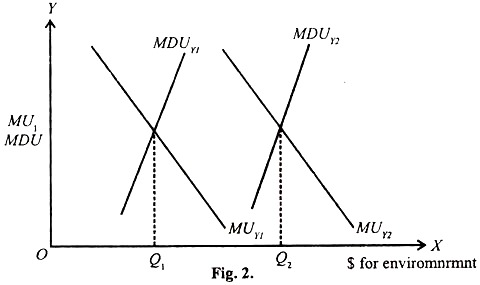After reading this article you will learn about the common economic system that exist till today.
1. Capitalist Economy:
In the Capitalist economy, there is free enterprise and resources are used to produce goods and services that are demanded by the consumers. This economy aims at profit maximisation. The economy often achieves its high targets of economic growth but the problem of distribution of income and wealth remains unresolved.
There is a great deal of exploitation of the natural resources in order to achieve economic growth. But there is a great deal of efficiency in production found in Capitalist economies due to the fact that there is high competition and one cannot afford to be inefficient by wasting resources and face high production costs.
The firms in this economy have no incentive to provide social amenities like clean air and pure water. All the citizens cannot be excluded as non-purchasers. Hence the firms don’t provide these services since they have no scope for profit.
ADVERTISEMENTS:
However, today oxygen cylinders and packaged mineral water have developed a market in the world, they are very expensive and out of the reach of the majority of the people. Government regulation on pollution is a must in Capitalist economies.
2. Centrally Planned Economies:
In Centrally planned economies, like that of Cuba and the former USSR, the main aim of the government is social equity and justice. Practically all of the main industries are owned by the state. They aim for the production of producer goods and are not profit motivated. They aim to ensure the welfare of the society as a whole and in this process they end up polluting the environment which in fact harms the society.
These economies normally engage in huge projects which cause a lot of damage to the environment and destroy fragile ecosystems. These economies often end up polluting more than Capitalist economies due to the fact that the industries are owned and have the backing of the central government.
Willingness for Environmental Improvement:
ADVERTISEMENTS:
Income is very closely related to the desire for improvement in the quality of the environment. This can be demonstrated by the following figure.
In this figure, the Y-axis measures units of marginal utility and units of marginal disutility. The X-axis measures money spent on environmental improvement. The downward sloping line MUy1 measures the marginal utility of money spent on environmental improvement when income (7) is at level Y1. It slopes downward following the Law of Diminishing Marginal utility.
The upward sloping line MDUy1 measures the disutility of spending additional funds on environmental improvement. It rises upward indicating that more other goods have to be foregone for environmental improvement, the greater is the disutility for giving up additional units of these goods.
ADVERTISEMENTS:
Equilibrium position is reached when MUy1 – MDUy1determining Qi money expenditure for environmental improvement.
When the income rises to Y2, then the MU and MDU curves shift to MUY2 and MDUy2 At the point of equilibrium, Q2 amount of money is allocated for environmental improvement.
Hence it can be seen that as income rises, society is willing to pay more for environmental improvement. This occurrence is natural, for at low incomes, the disutility of foregoing a few units of goods and services is high, and at high incomes, people do not mind spending more for a better environment for they have a declining marginal utility of money.
